a body sleeping in the discourse of its dismemberment
checking in with Will, another postcard from Chile, a couple Neruda poems, and a restaurant review
Dear Readers,
I've struggled a bit during the past few weeks, as the infrequency of this newsletter might suggest. World events, learning to live alone, re-growing the amputated limbs of my literary practice, these enormities put distance between me and this project. In simpler terms, the invasion of Ukraine and US response have filled me with sorrow and terror, as have the new restrictions on acceptable speech. It feels like the build up to the Afghanistan and Iraq invasion again and I can't see any outcomes that don't result in a grotesque carnival of horrors. There is too much to say and too little use in saying it. I'm lonely. I have rarely lived alone, and am all too comfortable organizing my days in response to the needs of others, both in my work and my domestic routines. I need to feel of use. But rather than “living like a homeless person in my own house,” when I'm on my own, as a friend once put it, I'm making myself nice meals, exercising, taking long walks, and even picking up the phone to call friends and family from time to time. These are all basic human tasks, but they are new to me, and have taken a bit of self control to practice. Reading has always been at the center of my literary life; but in the past five years I have barely even picked up a book. Two weeks ago, I went to a bookstore, bought some fiction, nonfiction, and poetry, and have been reading again. I've also begun to revise and expand a nearly complete novel that I set aside before opening Tannat. In all of this resetting and searching, the relatively simple and pleasant task of writing these newsletters was more than I could bear. But I am ready to begin again. Thank you for your patience.
This week's newsletter will be a potpourri. First, let's check in with Sarah in Chile.
Even by the hand-wave-y standards of natural wine-making, Jose Luís of González Bastías stands out. Conventionally trained winemakers, like Sarah's harvest companions Sam and Rachel, are shocked by his techniques, or seeming lack thereof. The sugar is never measured. If a schedule exists for levels of skin contact, racking, or fermentation, no one has seen it. Although a trained scientist, Sarah is not opposed to intuition-based artistry. She does, however, have lots of questions, most of which Jose Luís is disinclined to answer. He's not content with just allowing the native yeasts in a single fermentation to guide the process, but is continually mixing the different tanks together, regardless of type of grape, as long as the intensity of fermentation is similar. He says he is guided by “density,” but it's unclear what exactly that means. It does, however, mean that despite the labeling, nearly all his wines are co-ferments of different grapes. It is unlikely that he'd even be able to give any kind of accurate breakdown of varietal percentage of each wine. To pause for a moment on another quirk: most winemakers are very careful to avoid any oxidation by transferring wine to sealed containers once fermentation is complete, but Jose is lackadaisical about it despite the very real dangers of introducing off-flavors. Regardless, every bottle we have had from Gonzalez Bastias has been not only delightful, but deeply sound.
There are a couple conclusions one can draw from this. Either conventional wine-making is profoundly limited in its understanding of the science—this is the starting position for most natural winemakers—or the extreme health of the fruit simply overwrites any would-be flaws or idiosyncrasies. Sarah has been consistently flabbergasted by the health and vigor of the vines, and the luxurious perfection of the fruit. Now, we're not terroir-ists. We firmly believe that excellent wine can be made in a wide variety of landscapes and not just the great soils and climates of Burgundy or Napa. That said, the Maule Valley is uniquely suited for viticulture. The vines are old, own rooted, and dry farmed. The days are hot, but at night, winds from the Pacific Ocean cool the land. The rains are seasonal, so humidity is low during the growing season. The land is also relatively undeveloped, so there is no pesticide or herbicide drift. The soil is complex, but well drained, with minerals that have washed from the Andes into the valley over millions of years. Ultimately, the truth lies somewhere in between the realms of art, science, and phenomena itself. What a wonderful place for a curious mind to live.
Here is Sarah in her own words:
“This morning we foraged in the garden for lemons, oranges, tomatoes, chives, peaches and tons of other items for breakfast. We made latkes with eggs benedict. It was fantastic! We picked some grapes and then I gave the pigs the stems and skins. Today it is just measurements, punch downs, and wetting the tops every two hours. We are about to traverse the river and go to the tiny bar to hang for a little while. Rachel was playing guitar earlier and we were all sitting around outside drinking gin and tonics. It was relaxing and fun. The dogs waited for us and then when we came back to the river they swam across and back! It was cute and funny! There was a big black bull on our side that we avoided. Then we hung out for a while in the kitchen and then came back to our cabin and passed a bottle around. It is actually a pretty chill harvest. It is a good start since France is going to be so much more work.”
The Maule Valley, in addition to being a premiere site for viticulture, is also the birthplace of the great Chilean poet, Pablo Neruda. I've translated a couple of his poems, both, strangely, containing green stars.
The Blow
ink enchantments
drop by drop
athwart the trail
of madness and reason
like the trace
of a wound
on a body sleeping
in the discourse of its dismembermentbetter if my essence
was poured into a teacup
and dashed across an empty page
a singular verdant star
a stain that held all
I've written but without
an alphabet
unintelligible
an obscure wordless
blowSonnet 86
oh Southern Cross, oh aromatic, phosphoric clover,
with four kisses your beauty traversed
the black and pierced my hat:
the cold moon a perfect circle.my love, my beloved, diamonds
of blue frost in the quiet heavens,
a mirror, you tasked the night
like four cellars overrun with wine
oh finest filigree of effusive fish,
verdant cross, radiant as parsley,
fireflies condemned to complete the sky,lay with me, close your eyes, and mine,
sleep, for a moment, in the night of a man
ignite, in me, your four constellations
Last Tuesday, I left my Ditmas Park lair and properly dined at a fancy restaurant. Readers, it was extraordinary. I decided to meet a friend in the West Village and after a few minutes of deliberation, picked a Japanese-Peruvian place called Llama San, not knowing what to expect. The Pete Wells review is a very thorough appreciation of the cuisine, cocktails, and wine list. We had all of the small plates, then shared an entree. The scallop crudo with avocado in a cherimoya puree was exceptional, as was the purple sweet potato with uni, yuzu, and nori. The “udon verde,” really just incredibly soft noodles tossed in a simple pesto and served with crispy pork tonkatsu, seemed a little out of place, but I have stopped in my tracks to crave them twice in past week, so maybe I was mistaken. The cocktails are original and precise and the wine list is solid, but the sake selections are perhaps the best pairing option. Sake is amazing and we should all be drinking more of it. What struck me most was how the texture of the Peruvian starches, potatoes, sweet potato, avocado, and banana folded so seamlessly into a mostly raw fish (or ceviche) menu, often in places you might expect rice. This made the morsels more integrated, less granular, and highlighted some extremely subtle flavors. To balance out all this gentleness, they added toasted quinoa, crispy rice, or even bespoke corn nuts to the mix. Grains, the chef seemed to be saying, are for crunch. Root vegetables are for starch. I loved it, and can't wait to go back with Sarah when she returns from Chile. The also have the most adorable calico cat shaped chopstick holders.
That's all from me for now, but trust that I will be once again a more frequent visitor to your inbox.
Thank you.
William
P.S. Sarah and the crew turned a fermentation tank into a pool for a little spa day and the picture is too cute not to share.

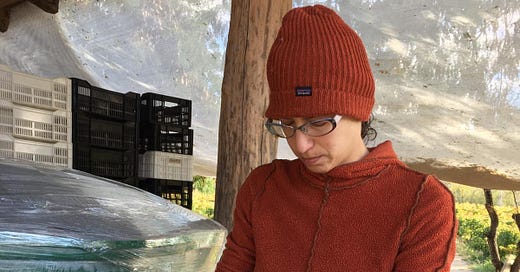



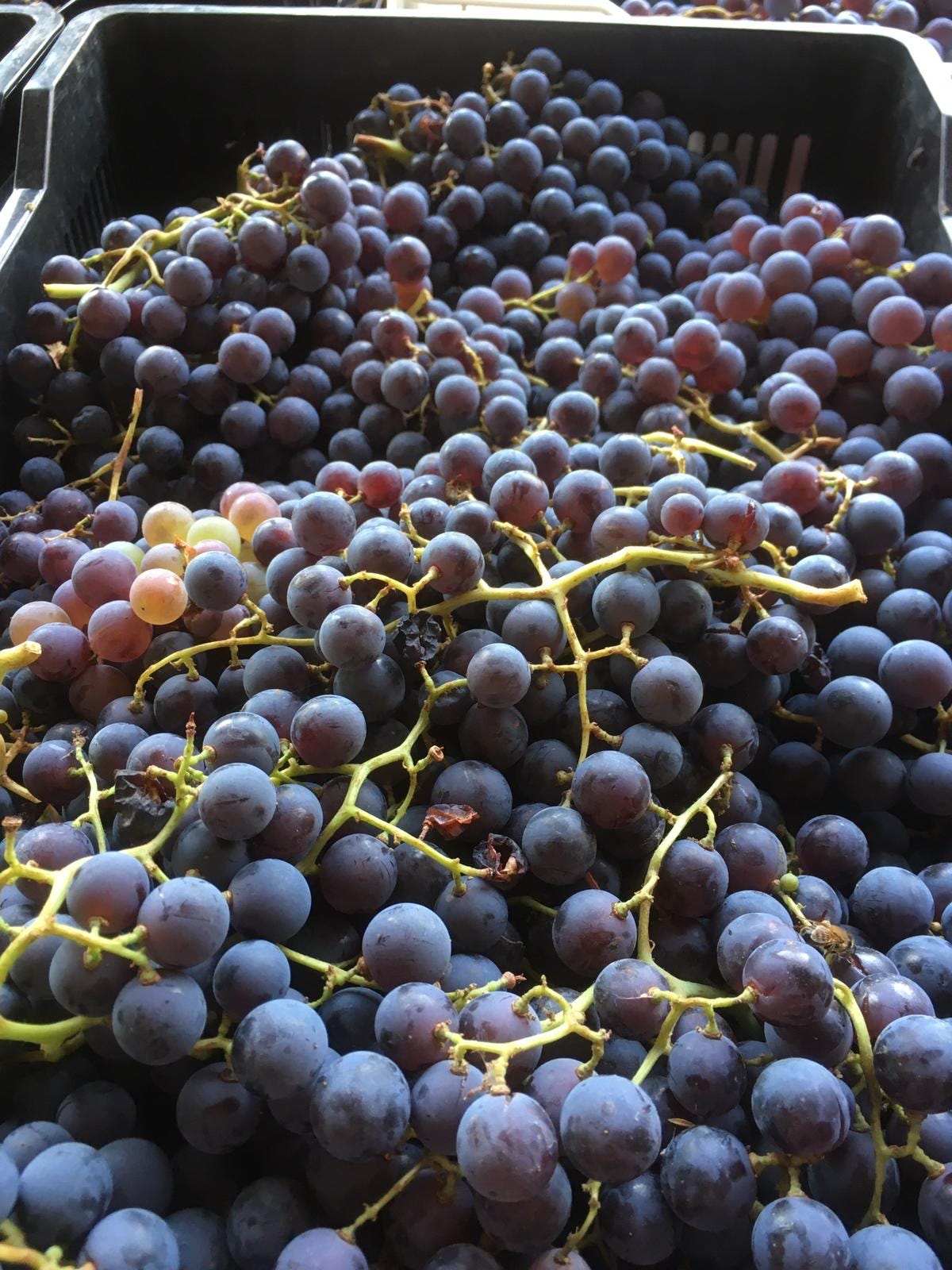
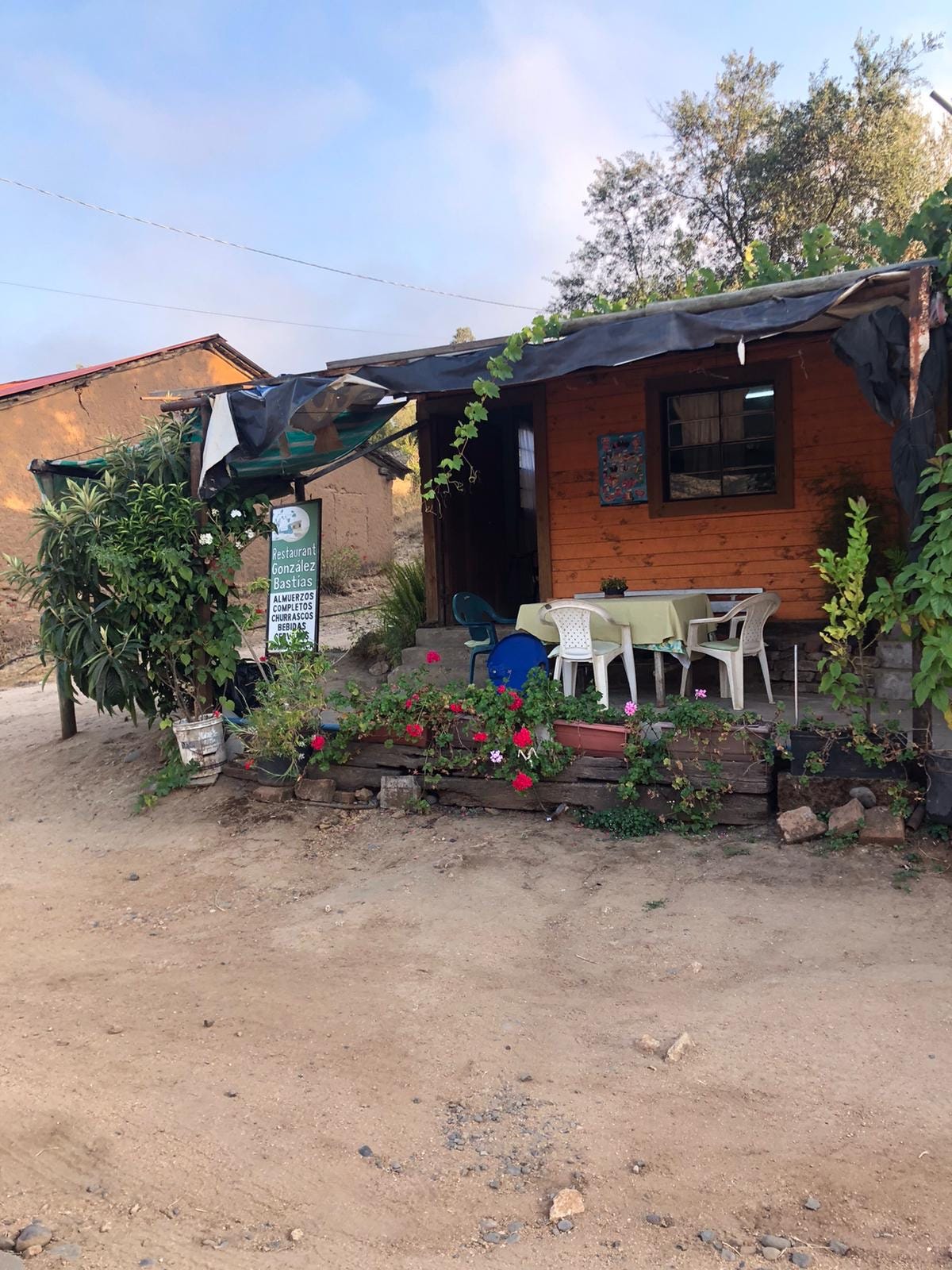
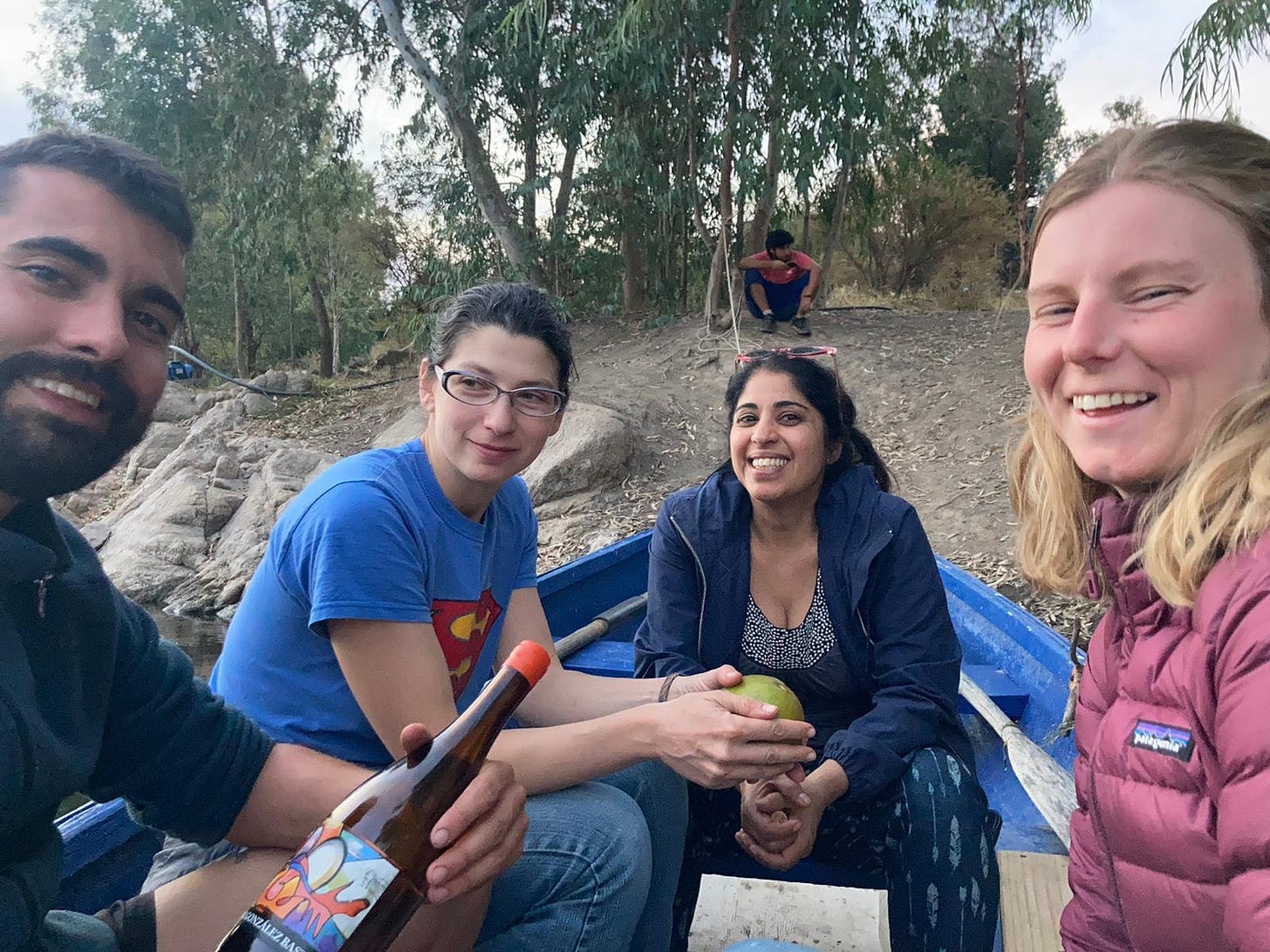
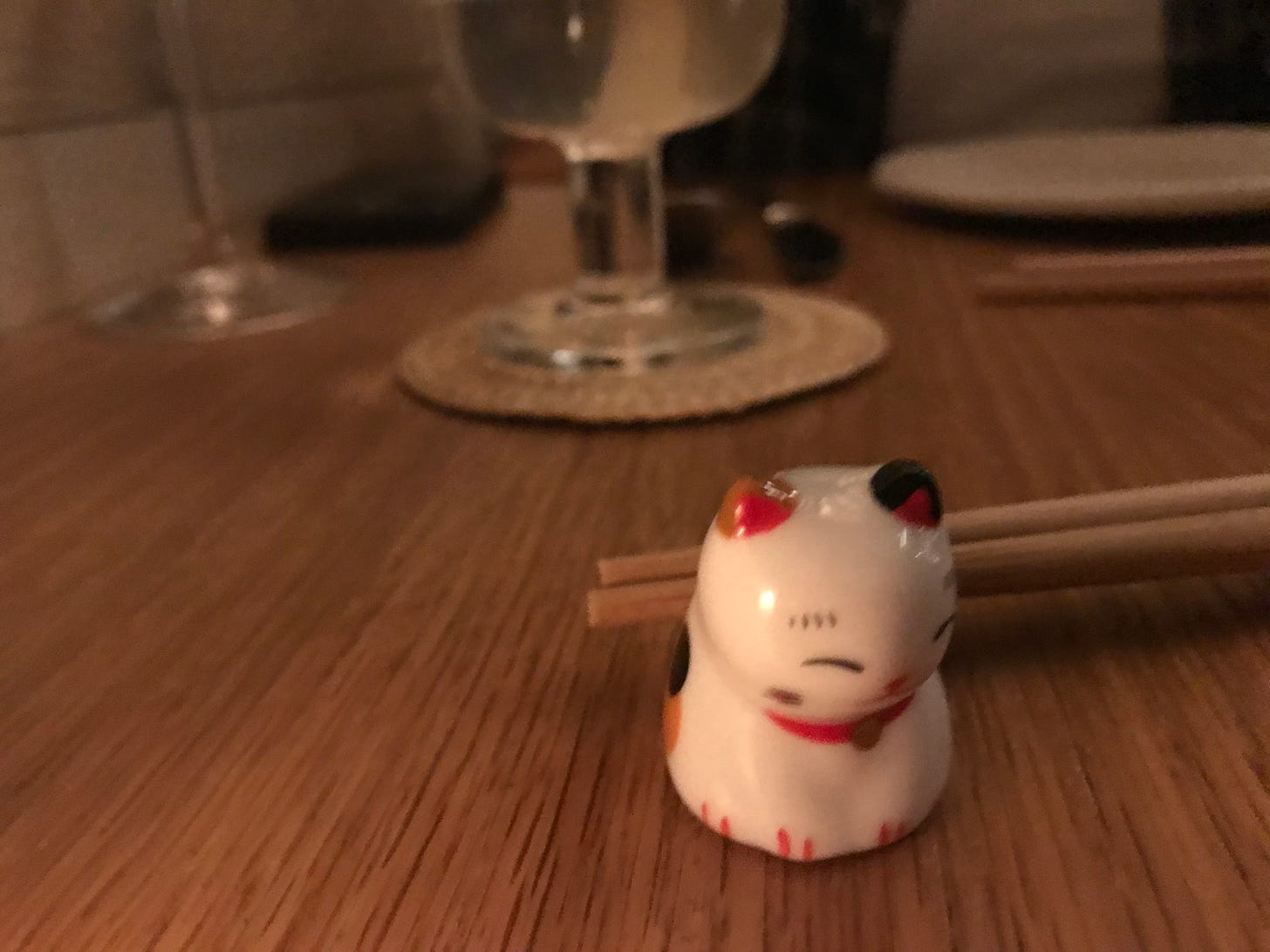
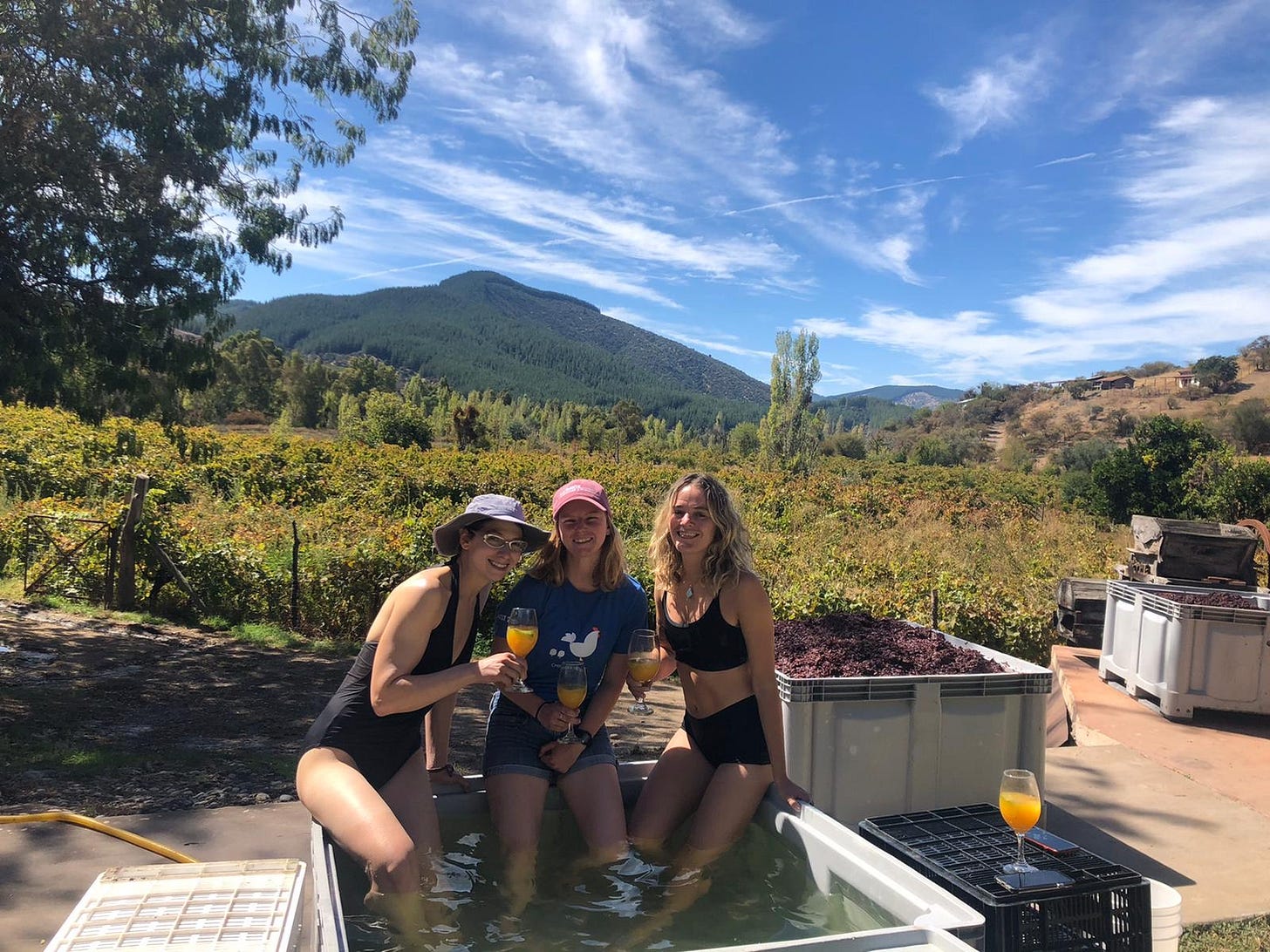
I'm currently reading Issac Butler's "The Method: How the Twentieth Century Learned to Act" and your two paragraphs on Sarah's experience with Jose Luís run in direct parallel to the work of the founders of modern American acting and the "how" of it all. "...the truth lies somewhere in between the realms of art, science, and phenomena itself." Ain't it the truth?